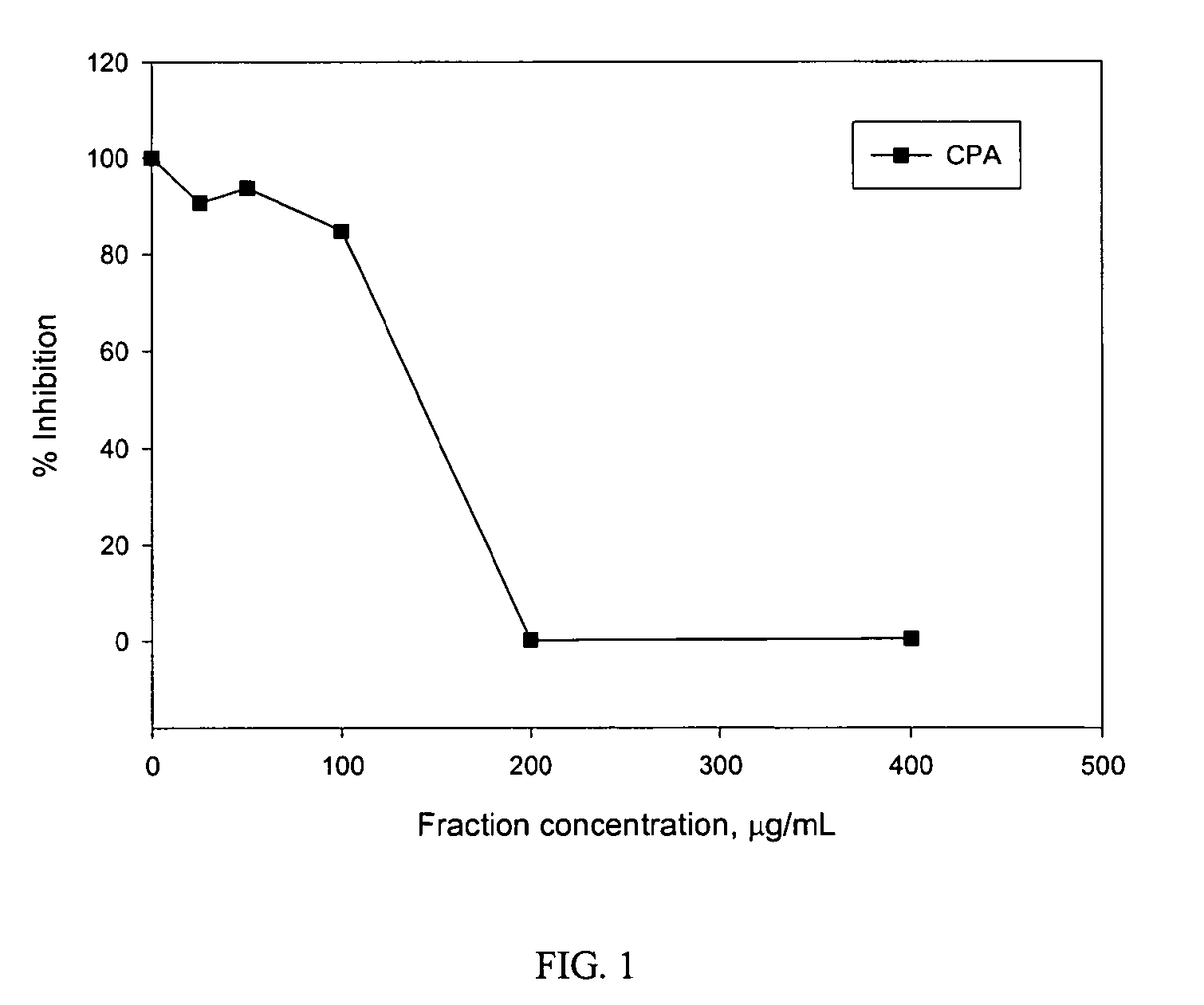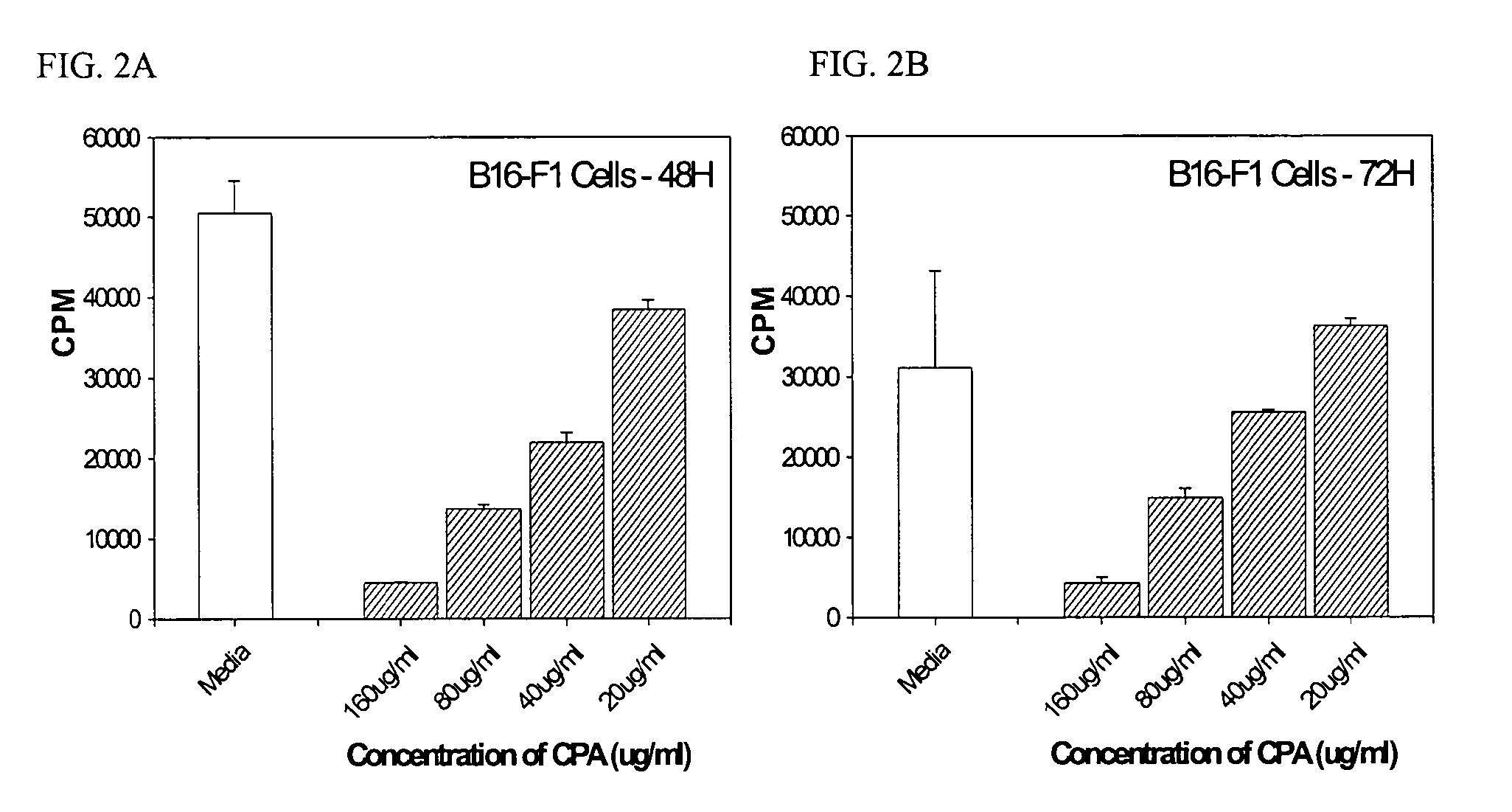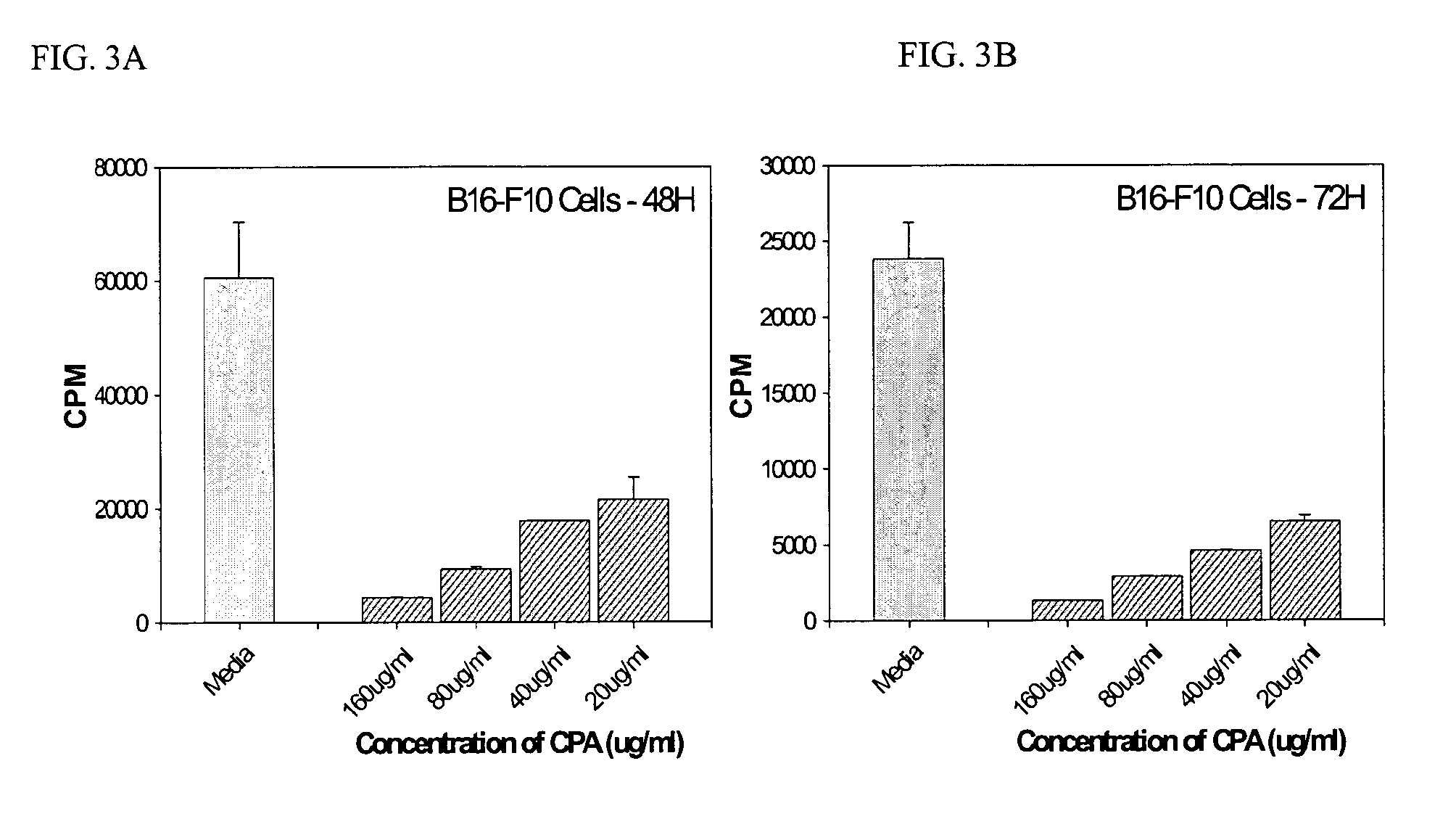Canola extracts containing high levels of phenolic acids
a technology of phenolic acids and canola, which is applied in the field of canola, can solve the problems of anticancer agents having adverse effects on the immune system of patients and their potential toxic effects
- Summary
- Abstract
- Description
- Claims
- Application Information
AI Technical Summary
Benefits of technology
Problems solved by technology
Method used
Image
Examples
example 1
[0093]Extraction of CPA (Canola Phenolic Acid) from Canola Meal
[0094]The extract enriched in total phenolics was isolated from canola meal by homogenization in methanol: water, 70:30, v / v and evaporation of supernatant to dryness. According to HPLC analysis (R. Amarowicz), this extract (Phenolic Extract Saskatoon Research Centre, Agriculture and Agri-Food Centre, Apr. 24, 2002) contained 5.3% phenolic acids (Table 1).
[0095]
TABLE 1Composition of phenolic acids in theextract from canola meal (mg / g)SinapicFerulicp-coumaricCaffeicProtocatechuicEsters50.750.560.080.07TraceFree1.030.020.020.03traceInsoluble-0.520.010.06Trace—boundTotal53.15 mg / g (5.3%)
[0096]This extract from canola meal had a substantial anti-proliferative activity against human skin cancer cell line SK-MELS in the Alamar Blue assay. The bioactive fraction was subsequently isolated by a large-scale procedure (developed for that purpose), tested again for anti-proliferative activity in SK-MELS cells. IC50 concentrations (c...
example 2
[0098]In Vitro Analysis
[0099]To evaluate anticancer activities of CPA, B16-F1 and B16-F10 malignant melanoma tumor cells (10,000) were cultured with CPA (solubilized in dimethyl sulfoxide, DMSO)) at 160, 80, 40 and 20 μg / ml. The cells were incubated for 72 hours in culture in presence or absence of extracts. The cells were cultured at 37° C. in 5% CO2 for 48 and 72 hours. [3H] thymidine was added to the cell cultures, cell proliferation was measured by [3H] thymidine uptake using Micro beta-Scintillation counter. See FIGS. 2A, 2B, 3A and 3B.
[0100]Preliminary in vitro studies showed that CPA inhibited the proliferation of B16-F1 and B16-F10 malignant melanoma tumor cells for up to 72 hours in culture in a dose dependent manner.
example 3
[0101]In Vivo Analysis
[0102]Male C57BL / 6 mice (17 wks old) were acclimatized for 4 days. Mice were treated for a week (oral) with CPA followed by injections of B16-F1 malignant melanoma tumor cells (2.0×105) in 100 μl saline subcutaneously in the right hind flank of mice. Mice were monitored for tumor growth for 28 days from the date of injection.
[0103]a) Effect of CPA Extracts on Development of Melanoma in Mice (Oral Gavage).
[0104]Mice were given 6.0% CPA w / v of CPA in Canola oil (0.2 ml) by oral gavages daily for additional 4 weeks after tumor cell injection.
[0105]Tumor Volume: When primary tumours became visible / palpable, their maximum length and width were measured and tumour volume calculated (p<0.04). It was observed that the growth of tumor was similar in mice treated with CPA by oral gavage as compared to the controls up to day 18 of treatment. After day 18, CPA treated group showed a significant reduction in the tumor volume as compared to control suggesting inhibition of t...
PUM
 Login to View More
Login to View More Abstract
Description
Claims
Application Information
 Login to View More
Login to View More - R&D
- Intellectual Property
- Life Sciences
- Materials
- Tech Scout
- Unparalleled Data Quality
- Higher Quality Content
- 60% Fewer Hallucinations
Browse by: Latest US Patents, China's latest patents, Technical Efficacy Thesaurus, Application Domain, Technology Topic, Popular Technical Reports.
© 2025 PatSnap. All rights reserved.Legal|Privacy policy|Modern Slavery Act Transparency Statement|Sitemap|About US| Contact US: help@patsnap.com



